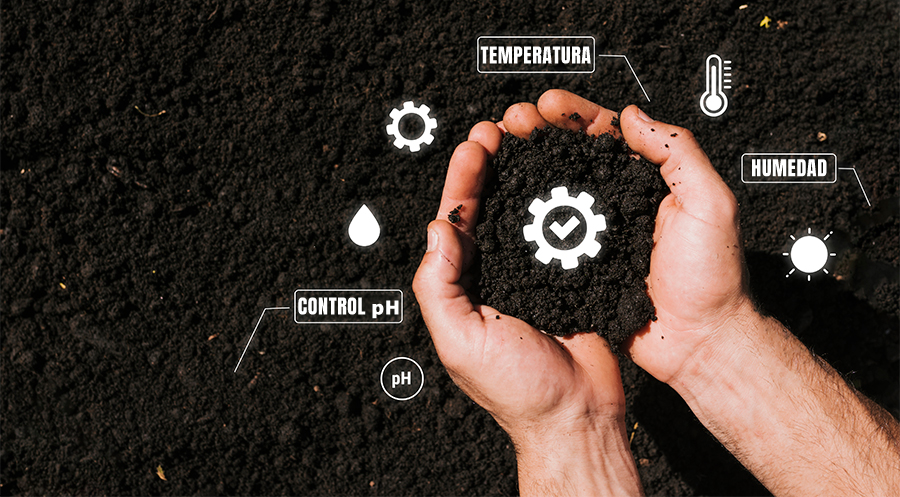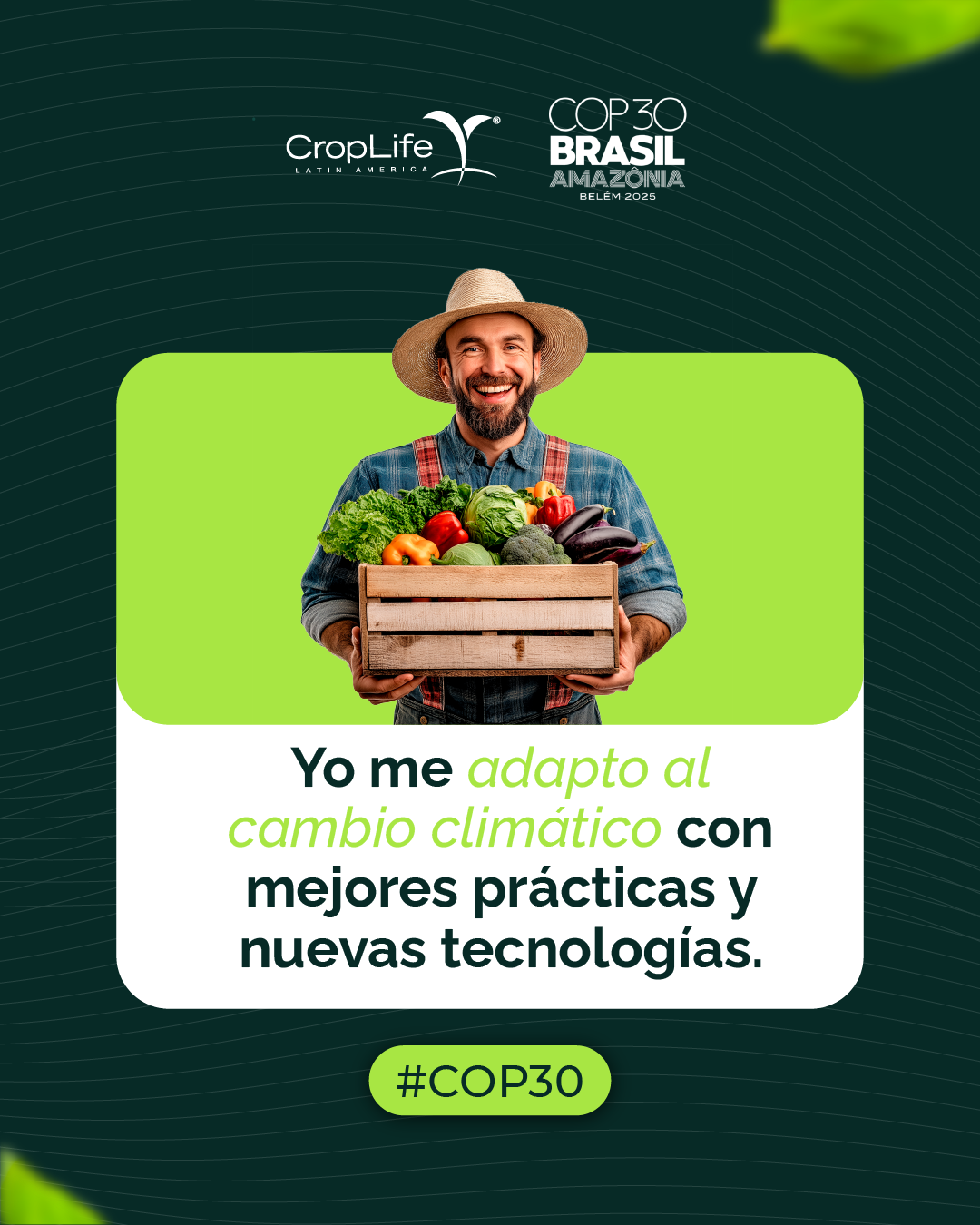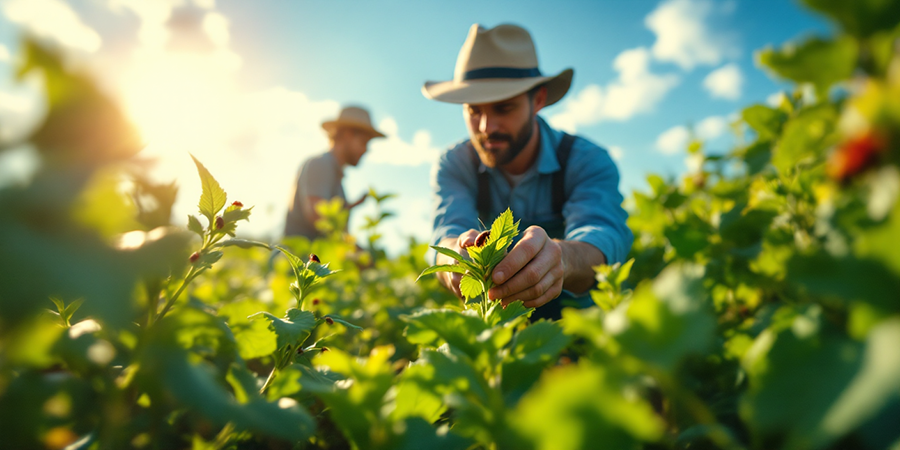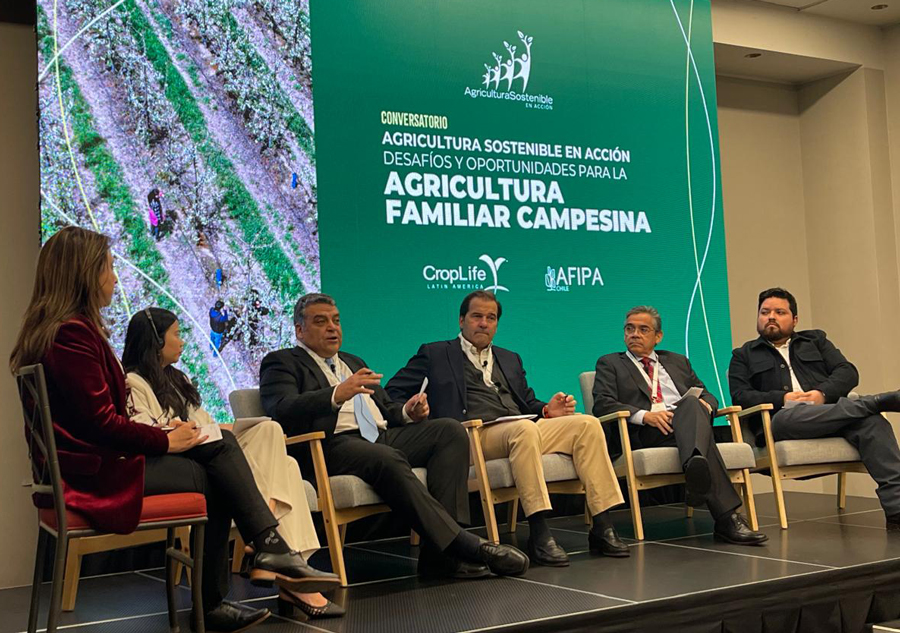November 2025
In the framework of the COP30 held in Belém, Brazil between 10 and 21 November, the crop-science industry reaffirms its commitment to sustainability and food security, highlighting how agricultural innovation is key to facing the challenges of climate change.
The companies represented by CropLife Latin America offer solutions that strengthen food security and help farmers adapt to climate change. Through research, innovation and adoption of technologies, modern agriculture is actively contributing to emissions mitigation, soil regeneration and carbon capture — making the field a vital part of the climate solution, says José Perdomo, President of CropLife Latin America.
Precision agriculture and climate-smart technologies
The use of digital tools, satellite data and decision-support systems allow inputs to be applied only where and when needed, optimizing yields and reducing environmental impact.
Climate-smart technologies — such as drought-resistant crops, bio-inputs and digital platforms — strengthen farmers’ resilience in the face of droughts, heavy rains, salinity and new pests derived from climate change.
Climate-adaptive varieties have been achieved with advanced plant-breeding technologies (NPBTs, for their acronym in English), among them CRISPR/Cas9, which enable crop genomes to be optimized with unprecedented precision, surpassing the time limitations and genetic-diversity constraints of traditional breeding methods. The potential of NPBTs to mitigate the effects of climate change and safeguard global food security lies in their ability to integrate modern breeding methods with climate-resilient agricultural practices[1].
“To innovate is to adapt: agricultural science and technology ensure that productivity and sustainability advance hand in hand. However, some conditions are required to allow access, such as regulations harmonized on scientific criteria, better digital connectivity, farmers’ willingness to adopt new technologies, and openness on the part of consumers to modernise agriculture,” adds Perdomo.
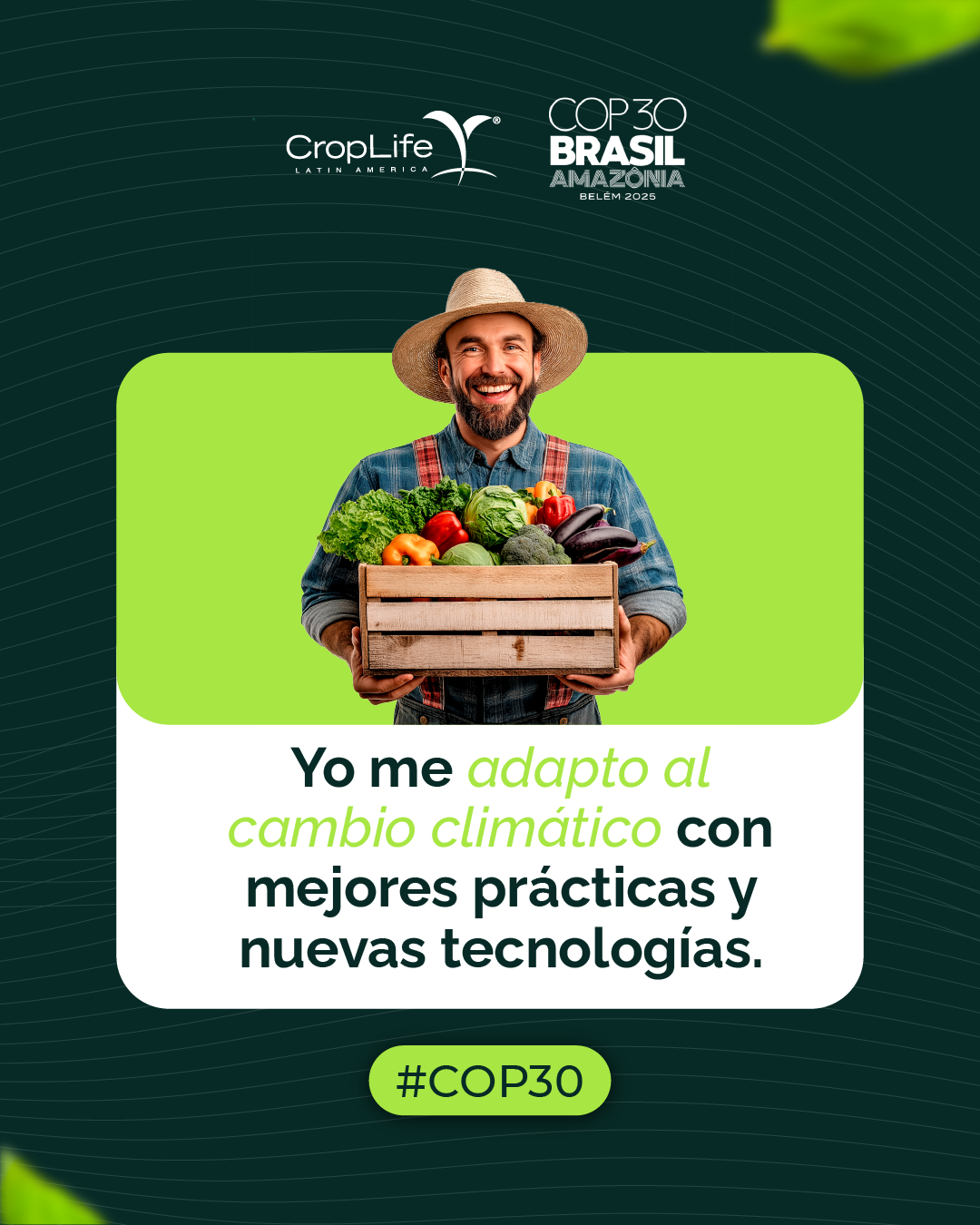
Data evidencing the impact of innovation
- In six decades, agricultural innovation has tripled land-efficiency. In 1960, one hectare of arable land fed two people; today it produces food for almost six, according to data from the World Bank and the FAO[2].
- Herbicides allow rice to be sown dry, reducing methane emissions by up to 47%[3].
- Integrated Pest Management (IPM) can increase yields by over 40 % and helps face new agricultural threats[4].
- Thanks to biotechnology, 23.6 billion kg of CO₂ were avoided — equivalent to taking 15.6 million cars off the road for one year[5].
- Drought-resistant maize has reduced the risk of crop failure by 81 %.
- Reduced tillage in dry ecosystems in Argentina, Brazil and the USA helps conserve water by 25-50%[6].
- 161 gigatonnes of carbon emissions have been prevented since 1961 by agricultural technologies[7].
More food on the same land::
The strategic use of crop-protection products — such as herbicides, insecticides and fungicides — complements IPM and seed-technologies, enabling yield losses due to pests and diseases to be regained
These yield increases translate into additional productivity without expanding the cultivated surface, contributing to agricultural sustainability and climate-change mitigation: producing more on the same hectare reduces pressure on new land, favours resource efficiency and integrates pest control into more resilient systems.
- Global cereal yields almost tripled from 1961 to today (from ~1.4 t/ha to >4 t/ha) without expanding the agricultural frontier[8].
- World agricultural productivity increased around 60 % between 2001 and 2022 according to the FAO[9].
- Without innovation we would have needed to expand the agricultural frontier by 50 %[10].
You may be interested: Solutions that regenerate soils and capture carbon
These yields also translate into environmental dividends: by increasing productivity on cultivated areas, farmers can adopt regenerative practices that contribute to carbon sequestration and soil-health.
Agricultural innovation is not optional — it is essential to face climate change and ensure food security. COP30 must recognise agricultural innovation as an indispensable tool to fulfil climate-action and food-security commitments. The CropLife companies reaffirm their commitment to climate-smart solutions that allow farmers to adapt, thrive and be active participants in climate action.
1 Hernández Alejandro, Gatica Andrés (2025). New Plant Breeding Technologies for Climate-Smart Agriculture: Enhancing Abiotic Stress Tolerance. https://link.springer.com/chapter/10.1007/978-981-95-0583-8_18#auth-Andr_s-Gatica_Arias
2 Our World in Data (2023) Total agricultural land use per person https://ourworldindata.org/grapher/total-agricultural-land-use-per-person
World Bank Data (2023) – Arable land (hectares per person)
3 Pittelkow C, Assa Y, Burger M, Mutters R, Greer C, Espino L, Hill J, Horwath W, Kessel C, Linquist B. (2014) Nitrogen Management and Methane Emissions in Direct-Seeded Rice Systems. https://acsess.onlinelibrary.wiley.com/doi/abs/10.2134/agronj13.0491
4 Pretty, Jules & Bharucha, Zareen. (2015). Integrated Pest Management for Sustainable Intensification of Agriculture in Asia and Africa. https://pubmed.ncbi.nlm.nih.gov/26463073/#:~:text=countries%20of%20Asia%20and%20Africa,interventions%20from%20pesticide%20industry
5 Brookes G. 2022 Genetically Modified (GM) Crop use 1996-2020 Impact on carbon emissions. https://pubmed.ncbi.nlm.nih.gov/36217947/
6 Science Direct, Derpsch, A.J. Franzluebbers, K. Koeller, T. Friedrich, W.G. Sturny, J.C.M. Sá, K. Weiss. Why do we need to standardize no-tillage research? https://www.sciencedirect.com/science/article/abs/pii/S0167198713001992?via%3Dihub
7 Jennifer A. Burney, Steven J. Davis, David B. Lobell, (2010) PNAS, Greenhouse gas mitigation by agricultural intensification. https://www.pnas.org/doi/full/10.1073/pnas.0914216107#con1
8 Our World in Data. (2024). Cereal yield (tonnes per hectare), 1961–2023. University of Oxford, basado en datos de FAO. https://ourworldindata.org/grapher/cereal-yield
9 Land statistics 2001–2022 https://openknowledge.fao.org/server/api/core/bitstreams/fba4ef43-422c-4d73-886e-3016ff47df52/content#:~:text=2000–2022-,FAOSTAT%20Analytical%20Brief%2079,smallest%20increase%20(31%20percent)
10 Jennifer A. Burney, Steven J. Davis, David B. Lobell, (2010) PNAS, Greenhouse gas mitigation by agricultural intensification. https://www.pnas.org/doi/full/10.1073/pnas.0914216107#con1









